Very Large Array (VLA) – New Mexico
Deep in The Middle of Nowhere is a vast, mystical, spooky, high-tech wonder. Sprouting out of the high, lonesome New Mexico desert, like so many alien spacecraft, the VLA looks like nothing you’ve likely seen before: a scattered, but regular, collection of huge radio dishes, all “staring” at the same mysterious point in the sky.
This place is always worth a visit, or even just a drive-by. I’m deeply struck by the alien, mysterious vastness of the place, and my mind embraces irresistible thoughts of deep space, super-novae, and the sheer Infinity of this Universe. Chills and goosebumps.
Sometimes, the dishes are closely bunched together, but they occasionally move so far apart that you can only see a few at a time. There’s no apparent commander or “mother ship”, but somehow they all remain synchronized, near or far.
I’ve visited the VLA at different times of year, and written briefly about it a couple of times, but it’s worth a closer look. This post will be some typical travel stuff, and maybe a bit more educational content as well. After all, where can you go, while still breathing oxygen from the air, to explore interstellar space?
GETTING THERE
The VLA is (fortunately) relatively easy to drive to, even in an RV. But it does take some time. In the west-central portion of New Mexico, there is literally no major town within 100 miles (Albuquerque is closest), and this is specifically why the location was chosen. It is very remote, and very distant from the disturbances that civilization throws out across the radio-frequency (RF) spectrum. This leaves the VLA region extremely “quiet”, and it can pick up the faintest of RF signals. [NOTE to optical astronomers: It’s also high-elevation, with very clear skies.]
You can get to the VLA on all-paved roads (NM-166) from the north (recommended), or by 50 miles of washboard dirt (NM-52) from the south (you are warned). We’ve been there by both routes, and while the southern road has its charms, and it’s even lonelier than 166, Howie, our motorhome, was pretty beat up over that stretch. For more painless access, drive in from 166; bit if you don’t mind tightening some screws and hold-down straps, 52 can be worth the pounding.
There is plenty of signage to guide you in, and most any time the big antennas will signal you that you’ve entered a strange space… you just can’t miss the VLA unless you’re asleep.
The VLA is open to visitors pretty much all year, but you may have to deal with some light snow in the winter months. When we were there one January, we were treated to a rare sight: the normally standing-still antennas were being “rocked” in unison, like nodding their heads up and down, to dump out an overnight’s load of snow. Amazing.
[NOTE: the Visitor Center is closed as of this writing, but only due to the Wuhan Virus. Since state and Federal executive orders are unpredictable, check the web site for current status.]
BUT WHAT IS IT? HOW DOES IT WORK?
Firstly, the VLA is a telescope, in its simplest definition. But forget most of what you ever knew about telescopes, because this one doesn’t use visible light, or lenses, and it doesn’t directly create an image that you can (immediately) see.
It’s detecting far-away RF signals in the 1-50GHz range, which is near your FM radio, to lower infra-red, which is well above your microwave and cell phone. From this, it’s obvious why the VLA shuns civilization and all its RF racket. In fact, you’re asked to turn OFF your cell phones and even GPS, when you’re in the area.
So, the VLA uses huge reflecting antennas, over 80 feet in diameter and more than 100 feet high, to collect faint RF signals from the far reaches of the Universe.
But why bother with RF? Why not just look through an optical telescope? Because a major amount of “information content” of distant stars and galaxies is outside the visible spectrum (see the figure above). In fact, some objects, such as “radio galaxies”, cannot be observed optically at all; and huge interstellar gas clouds are major RF sources, but are also not emitters of visible light. In short, RF astronomy shows the characters, components, and regions of space that are simply invisible otherwise.
Now, here’s the hard-to-grasp part, especially for non-technical types. A dish, by itself, does not make an image of a star or galaxy. In fact, the whole active collection of 27 dishes cannot make an image. Instead, the 8 collectors in each dish gather DATA from a single point in the sky. Frequency, intensity, and temperature are only a few of the possible measurements.
Eventually, after hundreds of millions of measurements, the data can be processed into a visible image. The methodology is highly technical, using interferometry (advanced physics) and Fourier transforms (advanced math) to create images from gigabits of numbers. It’s mind-numbing to all but a small cadre of experts.
The Images are so Pretty! Ironically, there is no such thing as “color” outside the visible spectrum, so visible-to-us color is added to the final image, to “code” various characteristics in the RF-made-visible translation, and to add information and make it visually easy to interpret. Here’s one of thousands of images from the NRAO website (the most luminous galaxy known, W2246-0526):
As you might imagine, the computing power to do all this data processing is phenomenal, expensive, and of very limited access. The processing computer can execute ten-thousand-billion-billion operations per second (10^^16)!!!
Scientists from around the world sign up far in advance to make use of the VLA’s hardware and software.
When they arrive at VLA, visitors are confronted with an amazing sight — hundreds of square miles of empty desert, dozens of stark white antennas dotted along three 11-13-mile-long stretches of railroad tracks. WOW.
And Why the Railroad Tracks?
Due to various laws of physics, the number and spacing of the individual dishes allows different effective resolution and “pseudo-zoom” results for the final image. The railroad tracks allow the three-spoke array of dishes (three groups of 9) to be closely packed, or widely spread out. The array has four major configurations, from only 0.64 miles in diameter (brightest image) to 22.62 miles in diameter (approximately 5X sharpest image).
In order to re-configure the antennas, a gigantic special-purpose rail-truck (transporter) is used. The 27 antennas are positioned as required, with dedicated “parking spots” for each of the 4 standard configurations. In addition to the working group, a 28th antenna is available. This “spare” is worked on, upgraded, or repaired in a dedicated monster-shack, and then swapped with the next antenna needing attention. This method assures that the array doesn’t suffer extensive downtime for needed maintenance or service.
The big transporter is even capable of keeping the antenna powered while being moved. This ensures that the sensitive electronics will remain temperature controlled.
[Just guessing, but I’d believe that fiercely windy days are NOT on the “let’s swap antennas” list.]
WALKING TOUR
You CANNOT drive or walk out into the array real estate, it’s strictly off-limits. But there is a self-tour walk that goes around the immediate compound, and it’s worth at least an hour. There is some decent signage and a few exhibits, plus you can get almost touch-it close to one of the antennas. The visitor center also has some unique souvenirs, and a lot of information about the Array, how it operates, planned upgrades, etc.
PLAYING WITH the VLA
This is one of the very few places I’ve visited that I have continued to have fun with at home. For starters, there’s the excellent web site, https://public.nrao.edu/telescopes/vla/. It’s a treasure trove of information and visuals that help to better understand the whole installation. There is a gallery of images that are guaranteed to raise the hairs on your neck. There are also literally hundreds of articles and blogs, educational resources, and an Explore page, it’s easy to spend hours here.
Also, simply messing around with Google Maps (satellite view) can show details and structures that are simply not accessible to us lowly travelers. You can get a sky’s-eye view of the antenna parking platforms, the railways and terrain, etc. etc.
THAT’S NOT ALL, FOLKS
I haven’t yet checked this out, but there’s even more going on in this out-of-this-world region… Have fun out there, and don’t let the hairs on your neck rise too high.
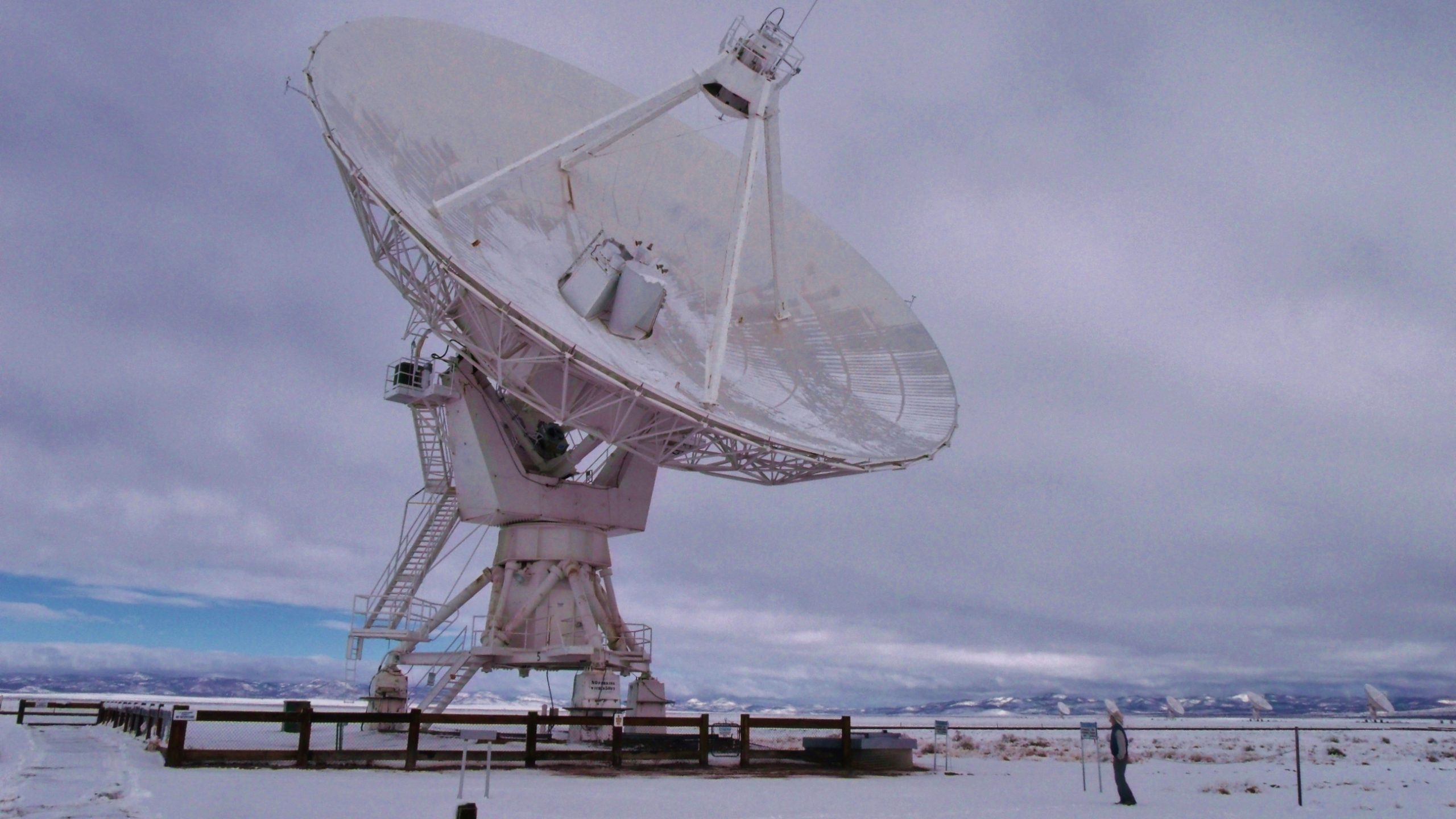
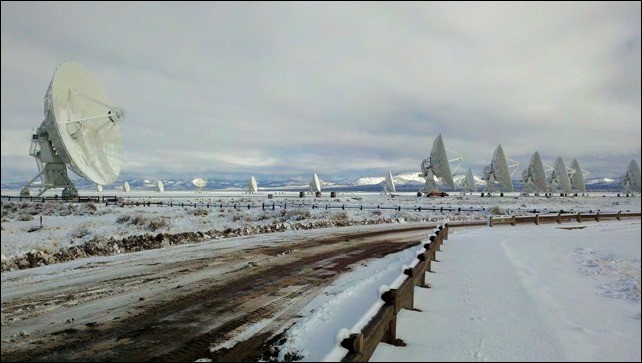
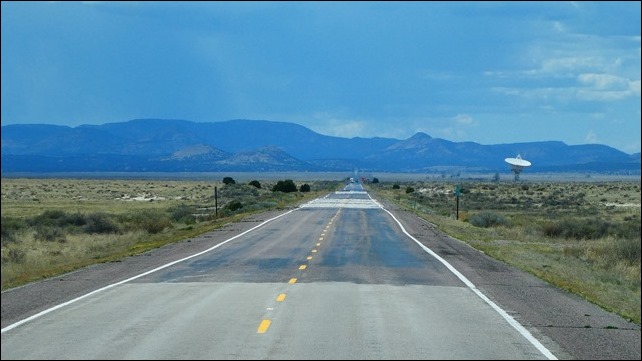
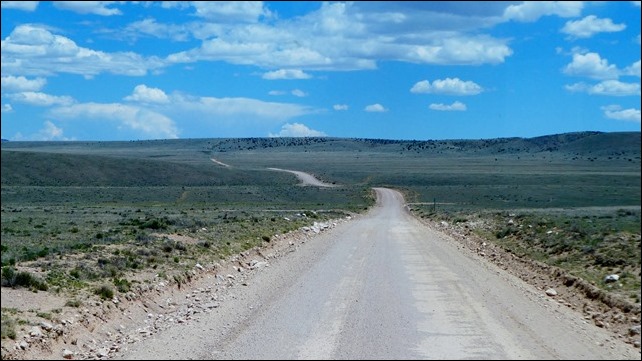
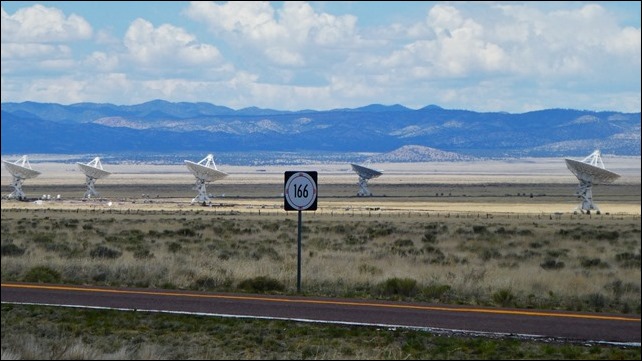
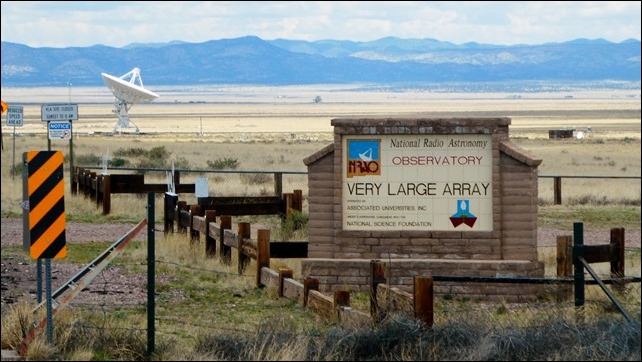
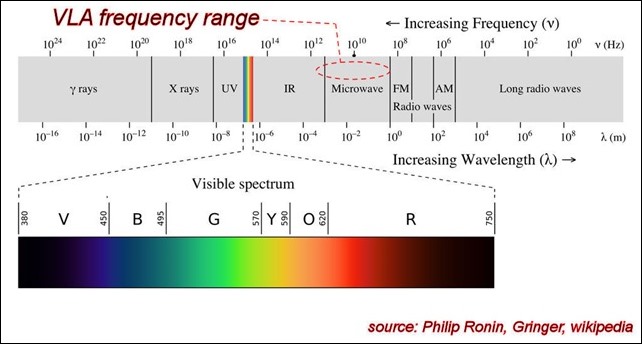
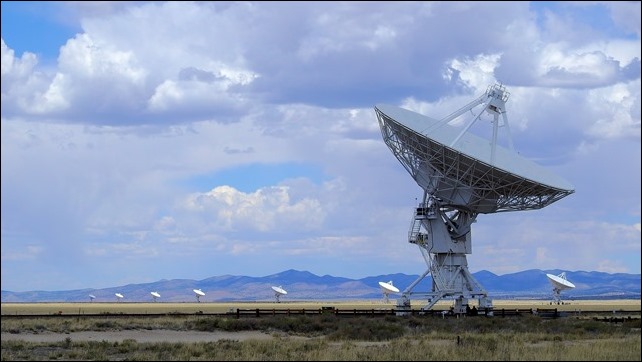
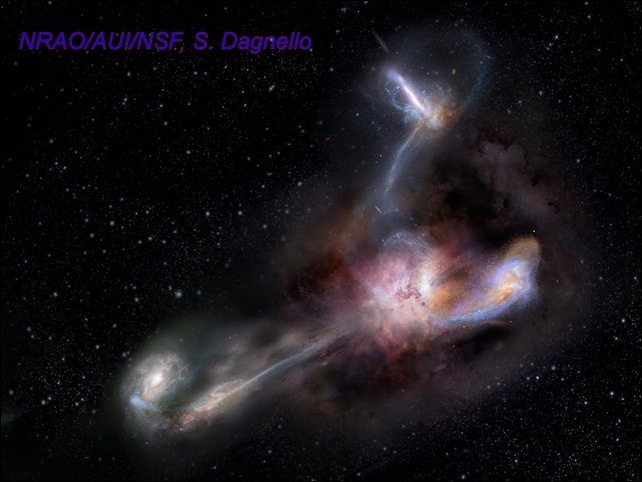
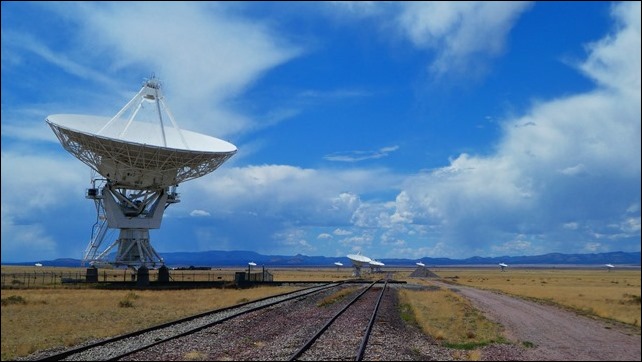
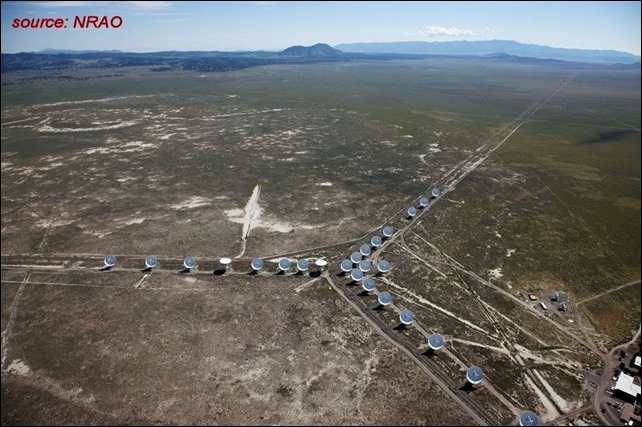
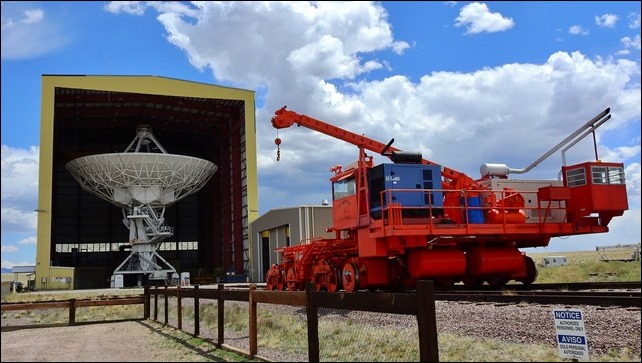
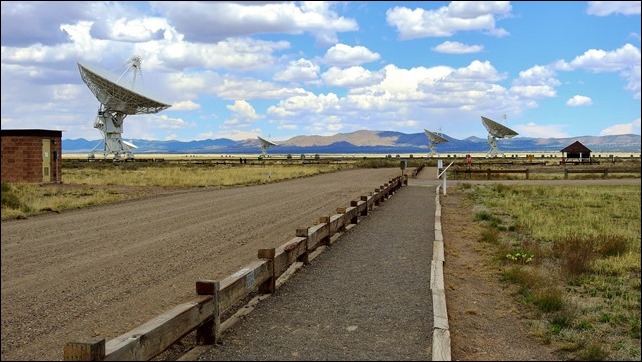
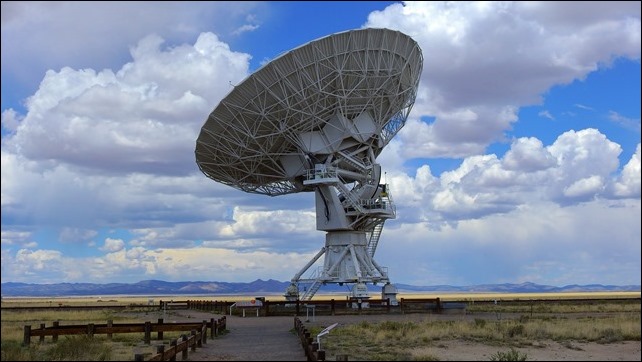
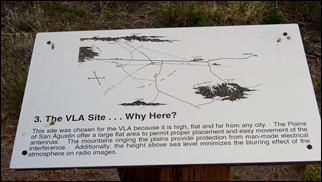
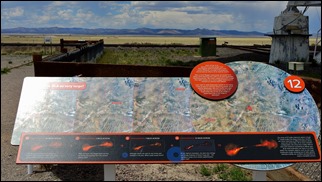
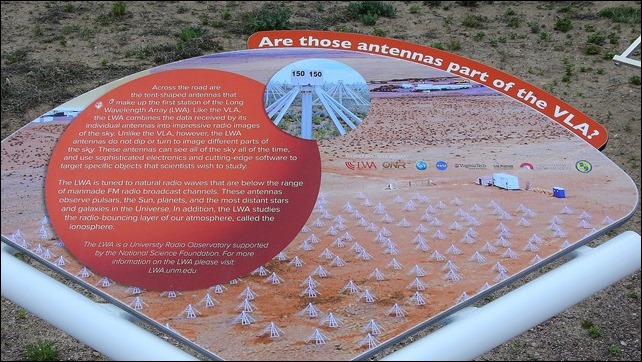
OMG, I never knew this existed. We are planning a long trip to the Northwest, but feel we could go to this area on our return to Florida. Thanks for opening up a wonderful new experience.
Sam, yes, it’s well worth a routing diversion. I’ve been there three times now, and always impressed. A friend of mine understands the technology better than I do, and (though I don’t recall it well enough to repeat) knowing how the Array works actually makes it even more impressive.
These days, they have a gift-shop worker, who answers the usual questions about hours etc. But if you can get ahold of somebody who “knows”, and pick their brains a bit, it just gets better and better.
Thanks again and will visit.